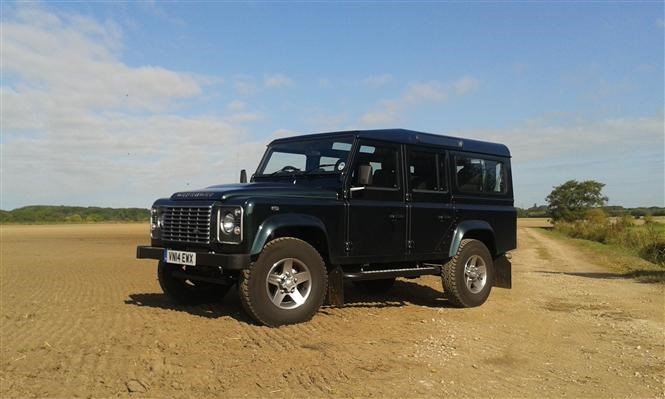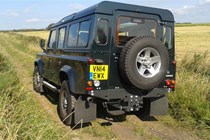Announcements that Land Rover will discontinue the Defender after the introduction of Euro6 emissions standards will be a bitter disappointment for many. It has been a loyal servant to many farmers and businesses for generations, but after 66 years, JLR will finally be throwing the towel in on Britain’s best-loved 4x4.
The Land Rover Defender will still be produced Solihull for at least another year; perfect timing, therefore, for a farewell road test of the iconic vehicle.
Great versatility
We tested the station wagon, although there is an array of body styles including a pickup truck, 4x4 hard top commercial and chassis cabs for conversions. It’s a versatile vehicle and the SVO (Special Vehicle Options) team at Land Rover converts the Defender for police, mountain rescue and even ambulance service applications.
Despite the station wagon being more aimed at the lifestyle sector, it is still used for a wide range of commercial applications. This is especially true in the farming and agricultural industries where, as well as having room for six passengers and the driver, it can be used for transporting tools, feed and machinery.
Once the five rear seats are folded up and stowed, it reveals a surprisingly large and useable load space measuring 1,005mm long by 660mm wide by 1,050mm high. Access is gained via the wide-opening rear barn door, which measures 878mm across.
Renowned driveline
Under the bonnet is the Ford Duratorq engine, which also features in the likes of the Ranger, Transit Custom and Transit 2t. The engine has been tuned to achieve a maximum power output of 120bhp and a high toque output of 360Nm. It’s a born off-roader with a permanent four-wheel drive, the six-speed gearbox has a selectable low range, and the front axle has features a two-pin diff.
Dated cab
Accessing the car is a lot harder than many of the modern day competition, partly because of the high cab floor. One you scramble yourself in, the first problem becomes immediately apparent; space. The cab is incredibly cramped and, even with the seat as far back as possible, this tester still found himself far too close to the steering wheel for comfort.
However, the old fashioned dashboard is plain and simple, and offers a nostalgic back-to-basics alternative to that of its contemporaries’. The seats are surprisingly comfortable too, with relatively good all round vision.
Poor road handling
Things don’t improve much when the wheels start rolling either. Despite having a thirsty 2.2-litre turbo-diesel engine under the bonnet, the Defender is painfully slow and lacklustre when the accelerator is depressed – partly due to the amount of drag caused by the boxy design.
The Defender uses the outdated worm and roller steering system, and as such, steers like a canal barge and generates an incredible amount of body roll into the corners. The soft suspension, however, cushions the blows of rough surfaces well and allows for a smooth ride.
Born off-roader
Despite the questionable road performance, we were pleasantly surprised by its ability off the road. The Defender comes into a world of its own in the mud, with the permanent four-wheel drive and centre-diff distributing torque evenly between front and rear axles, allowing it to deliver optimum traction on all terrains. Of course, the high ground clearance and incredibly strong chassis come in handy, too.
Summary
The Defender is a truly legendary vehicle that will be sorely missed by its drivers and enthusiasts. While its driver comfort and handling may have fallen behind its modern day competitors, it remains one of the most respected off-roaders and its plain and simple approach is adored by many operators who are often perplexed by the fiddly gadgets of today’s motoring.
Just so you know, we may receive a commission or other compensation from the links on this website - read why you should trust us.














